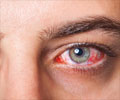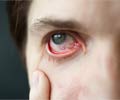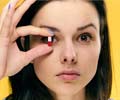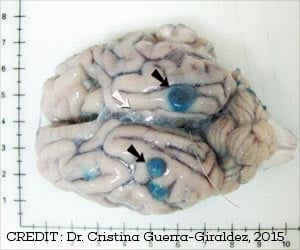Smart micro-dosing medication for the eyes has been developed, which can treat the eye more precisely with less waste and can also reduce side effects.

Researchers at New York Eye and Ear Infirmary of Mount Sinai showed that a microdose delivery system achieved a treatment effect comparable to a conventional eyedropper, while delivering less than four times the amount of drug. Microdosing also reduced the eye's exposure to the drug and preservative by 75 to 80 percent. Patients experienced reduced side effects, leading to a gentler treatment.
While glaucoma treatment preserves sight by reducing pressure inside the eye, it can also cause painful, irritating side effects for patients.
A conventional eyedropper's opening creates a drop that's four to five times larger in volume than the human eye can actually hold. When drops are too big, the overflow runs down the face or drains into the body through the ducts in the corner of the eye.
Oversized eyedrops don't just waste medication, they overdoses the eye with medication and toxic preservatives that cause side effects, such as redness, itching, irritation, and dry eye. Some topical medications can cause the heart to beat too fast, too slow or irregularly when too much is absorbed into the body.
Delivering drugs in very small, precise dosage volumes not only avoids spillage, it can also decrease tearing and blinking, thereby limiting dilution of the medication. The hand-held system evaluated in the study could deliver precise, single-digit microliter doses of medication to the eye's surface within 80 milliseconds, quicker than the blink of an eye.
Advertisement
They found that high-precision microdosing dilated the pupil as well as the conventional eye dropper method. At the same time, microdosed patients showed lower levels of the drug in their bloodstream. They also experienced a significantly lower rate of side effects 8 percent compared with 66 percent for patients treated with conventional eyedrops.
Advertisement
Dr. Ianchulev expects additional clinical trials to begin within the next 12 months to further evaluate the technology for treating patients with glaucoma, as well as for pupil dilation. He believes the first micro-therapeutic formulations could be available for consumers by 2020.
Dr. Ianchulev noted that the microdosing approach could eventually be used to treat a wide variety of eye diseases and conditions, such as dry eye, allergic eye disease, and infections. He also believes that the smart electronics of the platform will be used for digital health applications, such as compliance monitoring by both patients and physicians.
Source-Eurekalert













